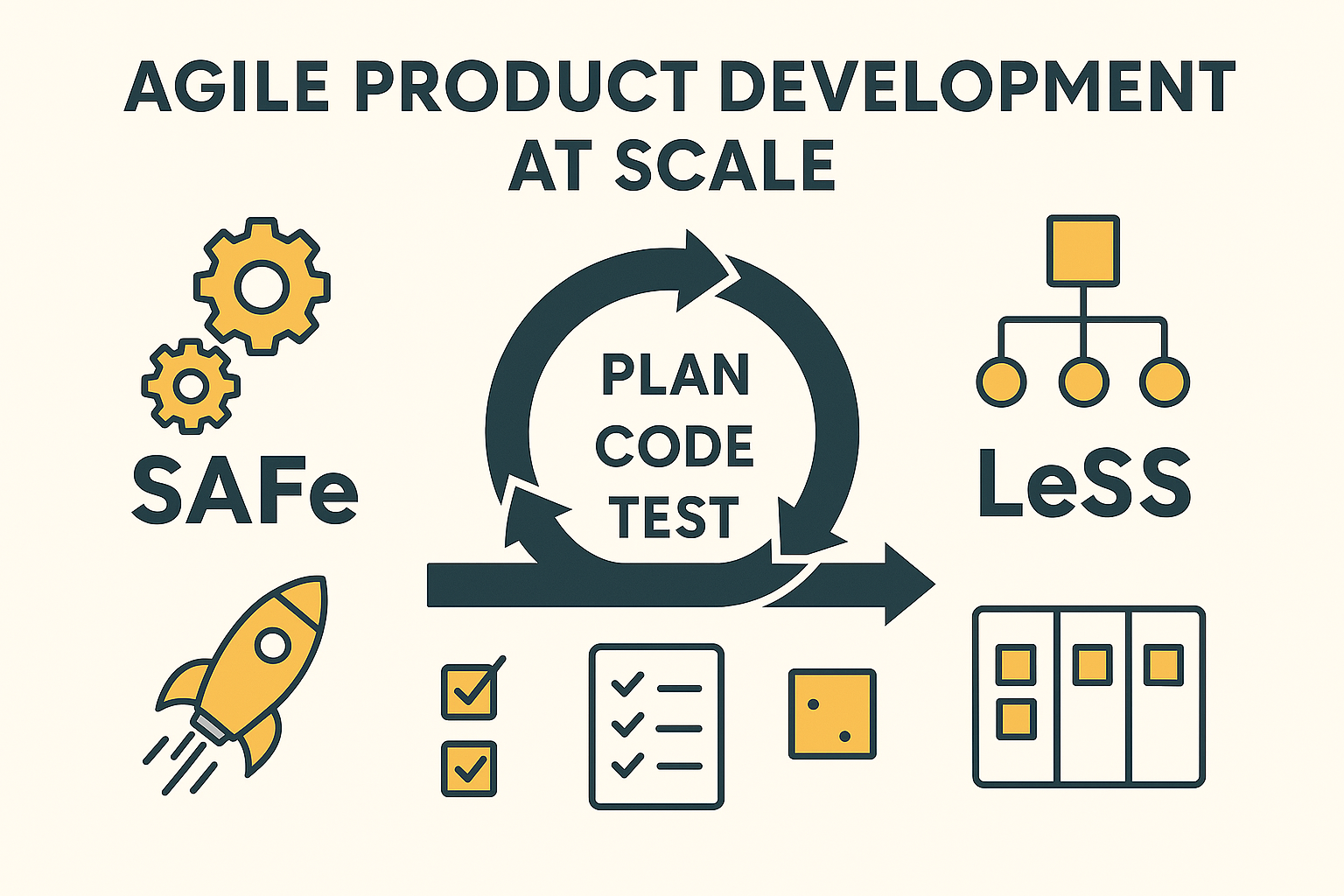Agile is powerful, but scaling it across multiple teams, departments, or geographies presents a different level of complexity. Frameworks like SAFe (Scaled Agile Framework) and LeSS (Large- Scale Scrum) were born to address that need—extending core agile principles beyond the team level to entire organizations.
The Need for Scaling Agile
Agile works brilliantly for small, autonomous teams. But what happens when dozens of such teams must collaborate on a single product? Challenges arise: misaligned goals, duplicated efforts, and slow decision-making. Scaling agile solves this by enabling coordination, consistency, and visibility while preserving agility’s core value—responding to change.
Overview of Leading Frameworks
SAFe (Scaled Agile Framework)
SAFe offers a structured approach to scaling agile across programs, portfolios, and even entire enterprises.
Core Elements:
Agile Release Trains (ARTs): Cross-functional teams aligned to deliver continuous value.
PI Planning: Timeboxed, synchronized planning across all
Lean Portfolio Management: Ensures funding and strategy align with business
DevOps & Continuous Delivery: Embedded to support fast, reliable
Best for: Large enterprises with compliance needs, multiple layers of management, and long-term strategic planning.
LeSS (Large-Scale Scrum)
LeSS stays closer to agile’s minimalist roots. It scales Scrum without much overhead—ideal for
organizations that want to stay lean and collaborative.
Core Elements:
One Product Backlog: Shared across all teams working on the same product.
Shared Sprint: All teams work within the same sprint and deliver together.
Minimal Roles: No extra layers—Scrum Master and Product Owner remain core.
Best for: Organizations that already do Scrum well and want to scale while staying agile in spirit and practice.
Key Considerations When Scaling Agile
Synchronization Autonomy: Teams must align but still retain independence.
Communication Overhead: As teams grow, so does the need for structured communication protocols.
Cultural Readiness: Scaling agile isn’t just about process; it requires mindset shifts— especially in leadership.
Tooling & Infrastructure: Systems like Jira Align, Confluence, or Azure DevOps support planning and tracking across teams.
Common Pitfalls
Overly Rigid Framework Adoption: Implementing SAFe or LeSS by the book without tailoring it leads to friction.
Ignoring Organizational Culture: Agile fails when leadership resists flattening hierarchies or empowering teams.
Lack of Training: Teams must understand their roles at scale—especially in SAFe where responsibilities multiply.
Conclusion
Scaling agile isn’t about picking the ―right‖ framework. It’s about adapting principles of agility to fit your organization’s size, complexity, and culture. SAFe provides structure and predictability for enterprise-scale systems. LeSS encourages simplicity and team autonomy. Whichever path you choose, remember: successful scaling depends less on the framework and more on leadership, trust, and a relentless focus on value delivery.





